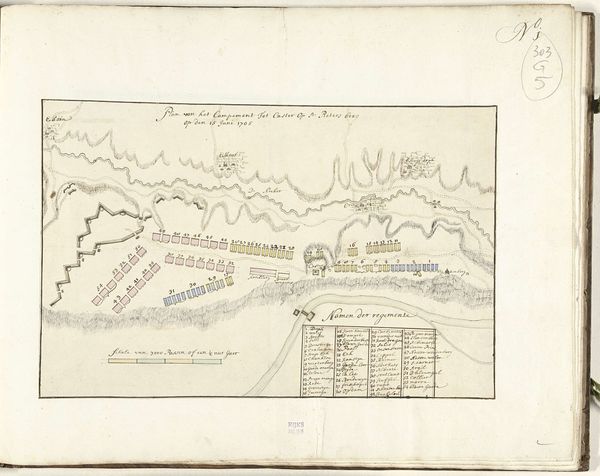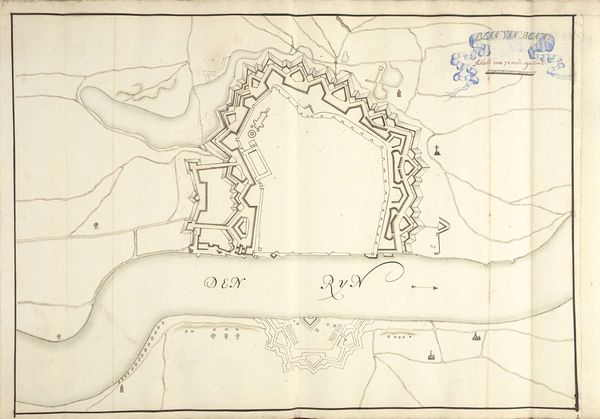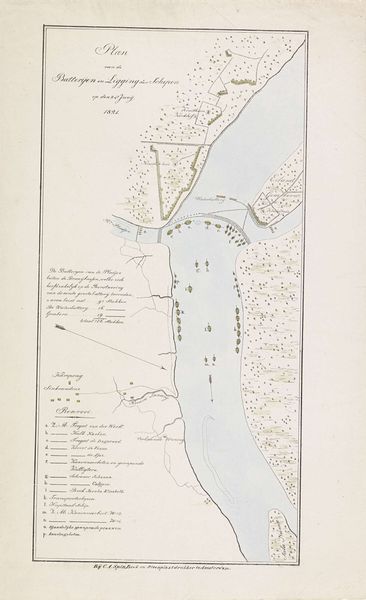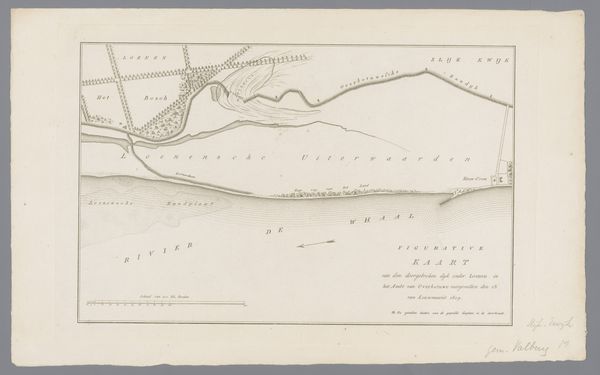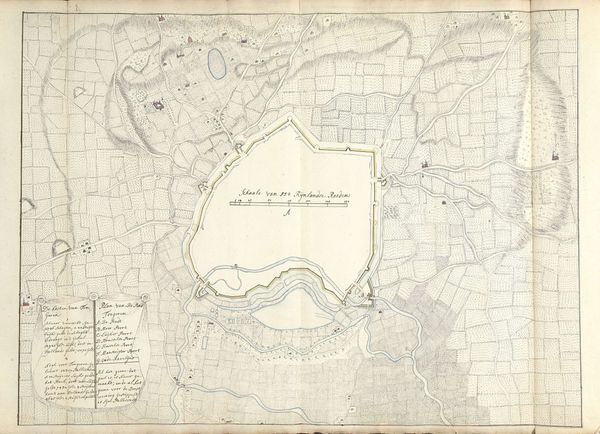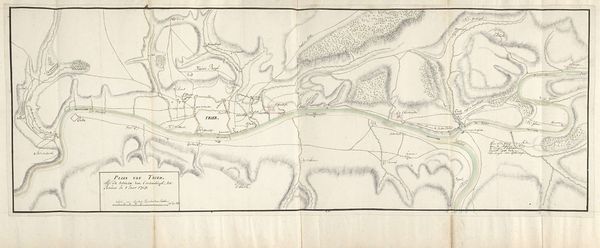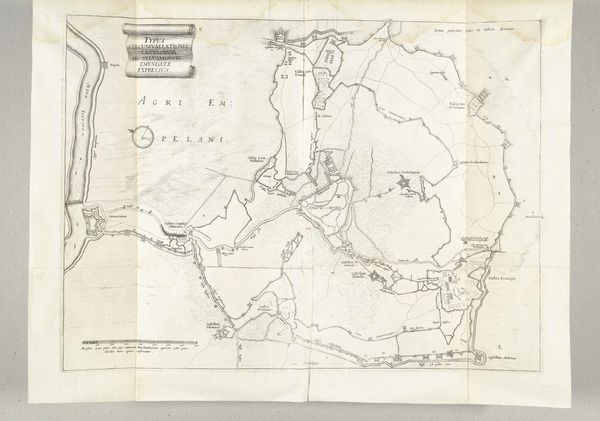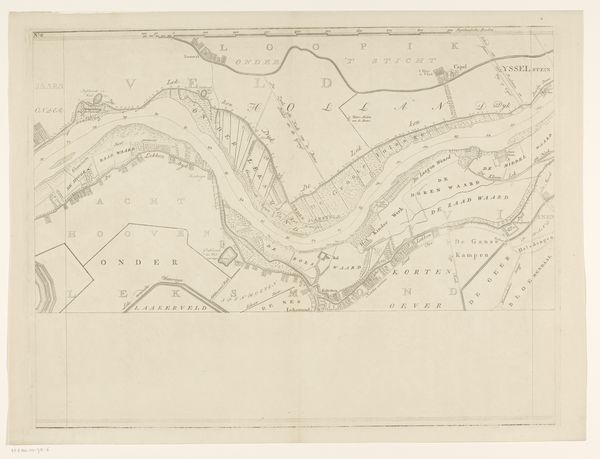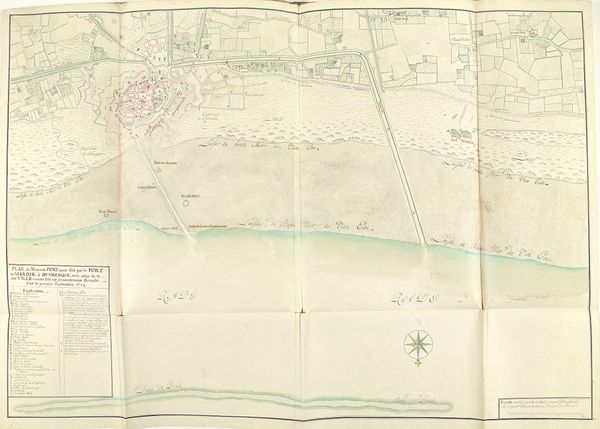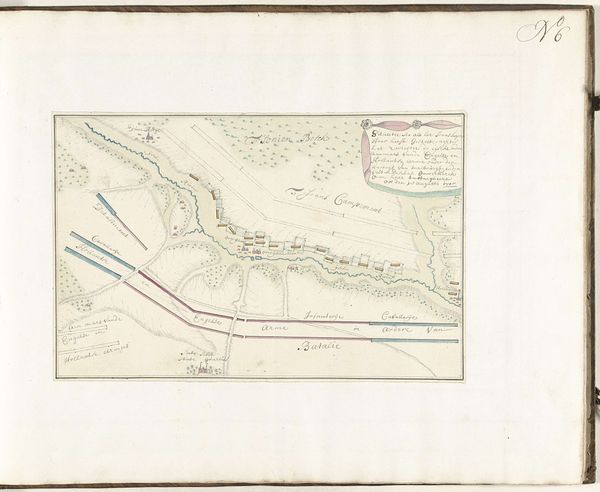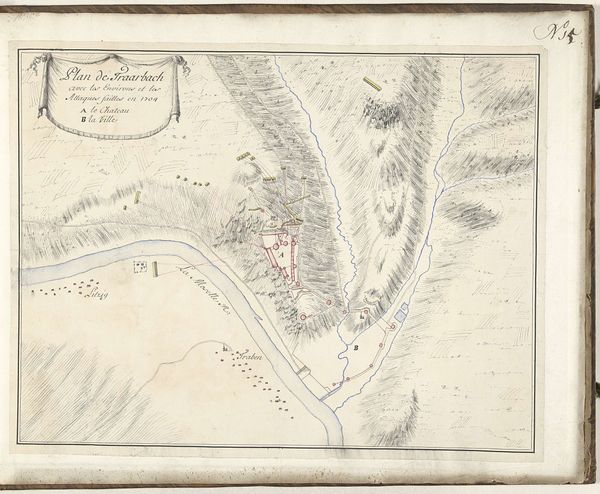
drawing, paper, ink
#
drawing
#
baroque
#
landscape
#
paper
#
ink
#
geometric
#
cityscape
Dimensions: height 455 mm, width 570 mm
Copyright: Rijks Museum: Open Domain
Curator: Allow me to introduce "Plattegrond van Trarbach," created by Samuel Du Ry de Champdoré between 1701 and 1715. This cityscape drawing, executed with ink on paper, depicts Trarbach in a meticulously rendered fashion. Editor: The intricacy is the first thing that grabs you, doesn't it? A muted palette of cool tones and tightly hatched lines; the whole thing feels very serious, analytical, perhaps even a bit cold. Curator: The application of Baroque visual language is indeed precise here. Note how Du Ry uses geometric forms to organize space, prioritizing rational clarity in depicting Trarbach's topography and architectural layout. Editor: I wonder what role images like these played in urban life at the time? You know, how they shaped people’s understanding and their place in the environment they occupied? This isn't simply a landscape, it's a claim on it. Curator: Undoubtedly. These kinds of maps served as visual tools in shaping perceptions of space and place, influencing social power dynamics. We observe that the architectural plans become symbols representing a hierarchical and social network. Editor: Looking at those hill-mounted fortifications…they speak to both defense strategies and dominance, right? I imagine this piece would also provide some peace of mind about safety within this city. It’s a testament to its social, political, and environmental awareness during a transitional period. Curator: Precisely! We might look closely at the topographical details, how the artist employed visual codes to represent height and depth through careful shading and linear structure, and question their potential to either enhance or perhaps skew viewers’ understandings of space. Editor: Do you think it would evoke a sense of pride or anxiety, perhaps? I am looking at this drawing, and can't help thinking about the relationship between lived experience and graphic representation; how does art actively produce, and perhaps police, public and private space? Curator: These are intriguing questions to examine here as the work presents so much evidence of space construction that existed then and how visual language in itself can inform public spaces. Editor: It certainly leaves much to consider about how cities become both the subject of representation and a canvas for power. Curator: Indeed. There are numerous avenues this cartographic masterpiece invites us to pursue, revealing much about visual representation during its period.
Comments
No comments
Be the first to comment and join the conversation on the ultimate creative platform.
